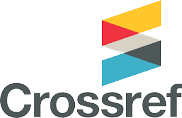Author Guidelines
General Instructions
The Process Engineering Journal contains scientific articles on topics relevant to the field of Development Economics in the form of research results, simulations and the development of fundamental concepts. Articles proposed to be published in the Process Engineering Journal must be writings that have never been published in other scientific magazines. Articles can be written in Indonesian or English using good and correct written language rules.
Articles are written in manuscript form in MS Word with A4 page size (210 x 297 mm) with a left margin of 25 cm, a top margin of 30 cm, a right margin of 20 cm, and a bottom margin of 20. Articles are written in a single-column format with a simple text layout Possible. It is recommended to only use the writing facilities provided in MS Word (bold, italics, subscript, superscript, equations, etc.) and not use other facilities that are not contained in MS Word (embedded graphic design, embedded symbols, embedded equations, etc.). All parts of the text in the manuscript are written using Arial 11 pt font and double spaced.
Special Instructions
The manuscript begins with the title, author's name, author's address, abstract and key words followed by the contents section which consists of introduction, research method (model development), results and discussion, conclusion, list of notations ( if any), bibliography and attachments (pictures and tables). In writing manuscripts, images, tables may be presented together with the text in the contents section, or in the Appendix, each of which is accompanied by a serial number and the name of the figure and table. The serial number and image name are written at the bottom of the image, while the table number and table name are written at the top of the table. Please ensure that the quality and size of the images presented are large enough to produce good print quality (one page for one image). Please do not frame the image. This will make it easier for the editor to edit and format the text later.
1. Title, Author's Name, Author's Address, Corresponding Author (corresponding author)
a. The title of the article is written concisely but informative. maximum 20 words
b. The names of all authors are written under the title of the article in full but without titles. At the end of each name is given a superscript letter to identify the author's address. In addition, it is also necessary to identify the author who is responsible for the correspondence.
c. The author's address is written below all the author's names
d. The author's address is written under all the author's name (major, university, email)
2. Abstract and Keywords
a. Abstract is written concisely; contains the aims/objectives, results and conclusions you want to highlight. Abstract length is around 150-200 words. It is recommended that the abstract does not contain abbreviations or formulas that are not widely known.
b. keywords Immediately below the abstract text, write 6 (six) selected appropriate keywords, each separated by a comma (,)
c.Abstract and key words are written respectively in 2 (two) languages, namely Indonesian and English
3. introduction
In the introductory section, the background of the research/writing is presented, in a brief review of the literature (literature) which explains the state of the art of the research and the purpose of the research/writing.
4. Research methods
In this section, the materials used in the research are presented. It is necessary to convey in sufficient detail the research methods used to ensure that the results obtained are repeatable or reproducible. If the submitted manuscript is a model development, it is necessary to convey a description of the proposed model and how the model is evaluated/used
5. Results and Discussion
In this section, the results of the research (model development) are presented in a systematic and constructive manner, accompanied by a comprehensive discussion that supports the research objectives and strengthens the conclusions. research results are presented in the form of tables or figures, can be presented together with the text in the contents section, or attached to the appendix.
6. Conclusion
This section briefly presents the main conclusions from the results obtained.
7. Reference writing
a. Libraries in the form of magazines/scientific journals/proceedings:
Capek, P., Hejtmanek, V., Solcova, O., Klusacek, K. and Schneider, P., 1997. Gas transport in porous media under dynamic conditions, Catalysis Today 38, 31-38
b. Libraries in the form of books:
Strunk Jr., W., White, E.B., 1979. The Elements of Style, third ed. Macmillan, New York
c. A library that is part of a book with an editor
Mettam, G.R., Adams, L.B., 1999. How to prepare an electronic version of your article, in: Jones, B.S., Smith , R.Z. (Eds.), Introduction to the Electronic Age. E-Publishing Inc., New York, pp. 281-304.
d. using the APA style format.










